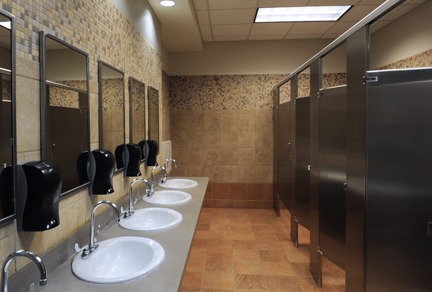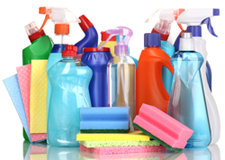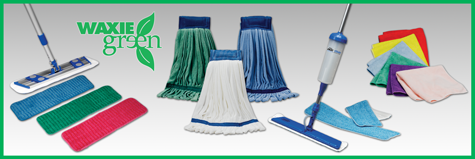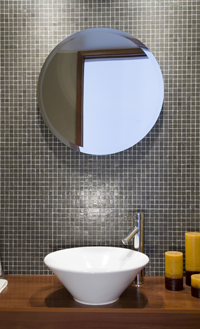Six tips to efficiently sanitize restrooms, the locations of top priority in commercial facilities.
By: Steve Kovacs, Cleaning & Maintenance Management Online

It’s considered one of the most significant rooms to clean in any business or facility: The restroom. According to the 2010 Procter & Gamble (P&G) Professional “Cleaning in a Down Economy” survey, 65 percent of respondents said the restroom is the most important room to clean and 39 percent said it is the most difficult room to clean. This tough-to-clean area makes up five percent of a facility’s total square footage, yet it represents 20 percent of the total labor budget, 40 percent of the soil and 50 percent of consumer complaints, according to the American Institute for Cleaning Sciences (AICS).
With all of these statistics in mind, it’s no wonder this small but heavily used space should be considered a top priority when it comes to sanitizing in an effective and efficient way. In fact, a 2008 Harris Interactive survey reported that an unsanitary restroom will drive almost one-third of customers away. The level of restroom hygiene can greatly affect the overall impression of the facility or business.
Restrooms contain a dozen or more highly-touched objects like door handles, toilet seats, urinals, faucets and sinks, flushing levers, counters, partitions and soap, paper and feminine hygiene dispensers. According to the U.S. Centers for Disease Control and Prevention (CDC), if a patron touches one or more contaminated surfaces and then touches an area on his or her face, there is a greater chance for transmission of human microbial pathogens. Since restrooms can potentially harbor these bacteria and viruses, it is critical that they be cleaned regularly and correctly to maintain a clean appearance and remain odor-free.


The following tips offer best practices for any restroom sanitation program:
1. Educate cleaning staffs
The first step in a restroom cleaning program is to ensure that staffs understand the difference between cleaning and disinfecting. Cleaning is the process of removing the soil from a surface, as soil harbors germs such as Escherichia coli (E. Coli), Salmonella and influenza. Disinfecting is the process of killing these germs. Cleaning well allows the disinfecting agents to work more effectively than disinfecting alone. FAQs about the differences between disinfecting & sanitizing.
2. Create a cleaning checklist
Workers will do what you inspect, not always what you expect. Put together a checklist inspection sheet to help ensure that every task is completed each and every time.
3. Get it right the first time
Multipurpose cleaning products can be a great way to achieve efficiency and effectiveness. Products that are formulated to remove a broad range of target soils and disinfect simultaneously can help get the job done right the first time while also saving time and money. Such multipurpose products are formulated with acid, surfactants and solvents to remove all types of restroom soil.
4. Allow proper dwell time
Whether using a multipurpose product or stand-alone disinfectant, the solution must be left on surfaces as indicated on the label instructions in order to be most effective. Cleaning professionals should avoid simply spraying and wiping and instead read and follow label instructions carefully, regardless of brand. Learn how to read a label.
5. Prevent cross-contamination
Preventing cross-contamination requires regular and thorough top-to-bottom cleaning of high-touch contact surfaces such as doorknobs, faucets and dispensers with the proper cleaning and disinfecting solution(s) and tools. It also requires cleaning and sanitizing the tools themselves. And, always place a trash receptacle by the door because patrons will often grab the door handle with a towel to prevent further germs.

Use microfiber to color code your cleaning tasks & to help prevent cross-contamination!
6. Exceed public expectations
Patrons expect to enter a clean restroom when they visit a business or facility.
This definition of clean can include:
• Surfaces free of noticeable soils and sanitized
• Emptied trashcans with new liners
• No visible graffiti or other vandalism
• Paper products restocked and operational
• No evident dust on vents, partition tops or ledges
• No odors
• Towel edges visible/extended
• Drains flowing freely
• Vents open with adequate airflow
• Toilet seats up
• Mirrors and chrome spot-free and shining
• No stains or discoloration on fixtures/dispensers
• Floors free of litter, build up and moisture.
These simple tips can help ensure an effective and efficient cleaning and disinfecting routine that promotes good customer service and makes the most of staffs’ valuable time and resources.
Like any other task in day-to-day life, if a job is worth doing, it is worth doing right the first time.
A well-designed restroom hygiene program that incorporates cleaning and disinfecting best practices and the proper tools, equipment and chemicals will accomplish just that..
Source: http://www.cmmonline.com/articles/229906-the-difficulty-of-keeping-restrooms-clean
Steve Kovacs is the research and development section head for Procter & Gamble Professional where he leads product development and customer understanding for cleaning product solutions provided for the hospitality, healthcare and building, cleaning and maintenance businesses. Kovacs, who holds bachelors and masters degrees in Chemical Engineering from the University of Louisville and an MBA degree from Xavier University, is an inventor on seven U.S. patents.
